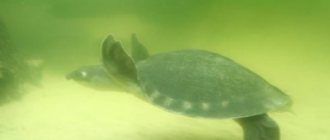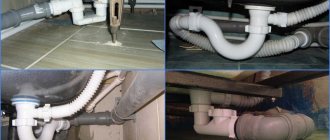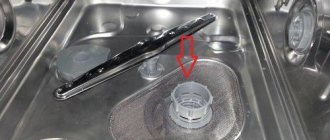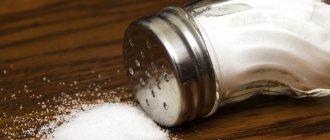The unpleasant smell of water in an aquarium sometimes bothers even the most experienced pond owners. This seemingly insignificant problem can lead to very serious consequences. After all, the reasons why water stinks are completely different. Therefore, if the pond smells unpleasant, you should immediately deal with the sources of the smell and quickly eliminate them.
Causes
Before you begin to fix the problem, you should determine its cause. There are several main factors that can cause aquarium water to smell bad:
- Overpopulation of the reservoir. One of the most common reasons. As a result of an excess of fish in a reservoir, a large amount of their waste products accumulates in a short period of time. Next, the processes of decomposition and rotting begin, which lead to stench. In this case, the water has a characteristic swampy smell of mud.
- Extra food. Food that is not eaten by fish sinks to the bottom of the reservoir and begins to rot and oxidize there. As a result, microorganisms actively multiply, leading to the smell of rotten eggs.
- Excess soil. Due to improper distribution of soil along the bottom of the aquarium or due to a large amount of it, it begins to oxidize. The smell of water in this case resembles rotten meat.
- Weak filtration or aeration devices. Old broken or low-power technical devices are not able to purify the required volumes of water, which leads to the appearance of a swamp stench.
- Rare cleaning and water changes.
- Death of an inhabitant. The aquarist does not always have time to notice in time that one of his fish has died. As a result of this, her corpse can lie in the aquarium for a long time and decompose, provoking the appearance of various dangerous infections.
- Poor quality decorations. Decorative items made from cheap materials oxidize in water and release toxic industrial substances.
- The appearance of silt on the ground.
- Incompatible or dangerous aquarium plants. Trying to diversify the flora of a reservoir as much as possible, aquarists often buy many plants there without thinking about their characteristics or functions. But there are situations when a newly purchased flower turns out to be completely unsuitable for being in an aquarium. In this case, the plants may give the water an onion or garlic smell.
- Feed particles getting into the filter.
Consequences for fish
When the balance of an ecosystem is disturbed, the environment changes for the worse. The water becomes cloudy, and a barely noticeable smell can turn into an unbearable stench.
Such changes have adverse consequences for the inhabitants of the aquarium:
- loss of appetite of fish;
- decreased vitality of pets;
- damage to plants;
- emergence and spread of infectious diseases;
- changes in the bacterial composition of water;
- death of fish and other animals.
Symptoms
The following symptoms will help you find out what exactly is causing the unpleasant odor in aquarium water:
- An aquarium is considered overcrowded if there is less than 5 liters of water per fish.
- Excess food in an animal's diet can be detected by food particles that float in the water after the fish have already eaten.
- The following indicators are considered normal soil levels:
- 2 cm – sand;
- 4.5 cm – gravel.
- The power of filtration and aeration devices is usually specified at the time of purchase. If technical devices have been working for several years, then it is better to replace them.
- When purchasing decorative items, it is important to study their smell, material and paint durability. A good decoration will not be too soft; it should not have an unpleasant rubber odor or sticky surface.
- Plants planted in a pond should be purchased only in special stores. It is also necessary to take into account their compatibility not only with each other, but also with the fauna of the aquarium.
Cleaning aquarium water
How to get rid of unpleasant odor and cloudiness? The container should be cleaned. For this you will need:
- 5–10 liters of water, which has the required parameters. It is used for filling into quarantine containers.
- Container for draining water that smells unpleasant.
- Tools for cleaning the tank: scrapers, nets, etc.
- Chemicals for cleaning. They should be purchased only in specialized stores. After all, this is where consultants will help with selecting the composition and determining the cause of the smell.
- Equipment for monitoring liquid parameters.
Cleaning of the nursery begins only after all the fish and shellfish have been planted. Aerators, compressors, filtration systems and lighting fixtures are turned off. The filter and its components are washed. Replace if necessary.
A siphon is used to clean the substrate. It is also used to clean decorative elements that are concentrated in the container. After cleaning, water with the appropriate parameters is poured into the aquarium.
To avoid problems related to how to remove the smell, experienced aquarists place speckled catfish, special mollusks and other species into the tank, which clean the substrate, plants and walls of the container from organic matter and algae. After all, the main reason for the appearance of unpleasant odors is unprocessed organic matter and food residues.
We invite you to read: Interesting things from the animal world, the most unusual snakes on the planet
Beginner aquarists are advised to regularly clean the tank. Chemical compositions that do not have a detrimental effect on the condition of fish, shellfish, or the growth of shady plants are suitable for this.
To remove remains and residues, mechanical, bottom and other filtration systems are installed. They contain elements that require periodic cleaning. For washing, use only running water.
By following fairly simple rules, you will never encounter the problem of why the water becomes cloudy, stinks, or blooms.
Ways to get rid of odor
You need to start getting rid of the smell only after establishing the exact causes of its occurrence.
- If the problem is overpopulation of the aquarium, then its volume should be increased or some fish should be resettled. There are also alternative methods to solve the problem, which include reducing the number of plants or increasing the power of filter devices. However, these actions are not able to solve the problem for a long time. It is important to remember that free territory is important for every fish, regardless of species.
- If the fish cannot cope with the volume of food, then you need to adjust their menu and further observe their behavior.
- If a stink occurs due to a large amount of soil, you need to reduce its height in accordance with established standards.
The water in the tank began to become cloudy and smells like a swamp: causes, prevention
“Why does the water smell like a swamp? The whole underwater world smells like mud! The water in the aquarium has become cloudy! What to do? How to remove terrible odors? The answers are quite simple, if you are attentive, you have already received one. Let’s repeat and consolidate: insufficient amount of oxygen (water circulation problem). When there is not enough oxygen, the water quickly becomes cloudy. Fish burrow under stones and muddy the water. Proceed as follows: reset the aeration and clean the filter. Hydrogen peroxide also has the ability to saturate water with oxygen. It will be useful to purchase a device that measures the pH level of water.
The second answer is also given above: a large amount of peculiar feces released by fish due to crowded conditions and oversaturation in the tank. This causes the water to become cloudy very quickly. There is no need to talk about the fact that the water “smells”. Place the fish and clean the aquarium. In addition to oversaturation of the aquarium, the reason may be the following: the inhabitants are not compatible with each other. Then the same thing happens: copious discharge of disgusting-smelling feces.
When the pH level in the water is insufficient, the soil turns sour and silt appears. As a consequence, the appearance of hydrogen sulfide is inevitable. The presence of this substance in the tank will not bring joy to your pets.
In two out of three cases, the water becomes cloudy due to plants. There are two options here:
- There is not enough space for plants.
- There is plenty of space for plants.
Accordingly, you should offer them a new habitat: a larger or smaller aquarium.
In order to prevent terrible odors and cloudiness of the water in advance, you need to do the following: get aquarium “orderlies” (snails, speckled catfish, ancistrus and others). They will help keep the tank clean, beautiful, and healthy.
General cleaning of the aquarium
General cleaning of the aquarium is a universal way to get rid of odor, which works in almost all cases associated with violations of hygiene standards in the reservoir.
- You need to carefully inspect the aquarium to exclude the possibility of dead fish being in it.
- Next, catch all the inhabitants with a net and place them in another container for a while.
- Completely change the water, wash all the walls, decorations and clean the plants.
- Remove the filter and inspect it, if necessary, remove pieces of stuck food from there.
- Remove all old plants, algae and poor-quality decorations from the aquarium.
- Treat other decorative items with disinfectants (chlorhexidine, hydrogen peroxide, etc.).
How to get rid of it?
Removing the film is quite easy and there are many ways to do it, from simple old-fashioned ones to modern technical means.
Using a piece of paper
This is the oldest, proven method, accessible even to a schoolchild. You will need a clean sheet of paper or a napkin; printer paper is perfect. It needs to be placed on the surface of the water and, after a short time, without letting it get wet, pull it by the edge and pull it out of the aquarium. All the film will remain on it. This procedure can be repeated several times until the contamination is completely eliminated.
With the help of snails
Placing a sufficient number of snails in the aquarium is also a good way to deal with bacterial film. Australian or pimply physes, ampullaries, and coils are suitable. Mollusks will quickly, literally in 2-3 days, clear the water of food residues and rotten parts of plants, and remove plaque of microscopic algae from the walls.
When the film disappears, some of the snails can be removed, since their population grows very quickly and excess snails can harm ornamental plants.
More visual instructions can be found in the video below:
Special drugs
A quick effect is ensured by the use of antibiotics. Several biomycin tablets are dissolved in the aquarium at the rate of 1 tablet per 10 liters of water, thereby disinfecting the aquatic environment. Before using the drugs, all inhabitants of the aquarium should be removed.
It should be remembered that the use of an antibiotic is a last resort, which should be used only in case of a real threat to the life of the inhabitants of the biological system.
By technical means
There are also special technical devices designed to deal with dirty film.
For example, the surface extractor VUPPA-1, designed for large-capacity aquariums. It is attached directly to vertical glass and quickly and effectively removes all harmful elements from the surface of the water.
This device, which resembles a glass in appearance, collects the top layer of water, which then goes through 3 stages of filtration inside the device body. The purified water is then returned to the aquarium.
Ultraviolet
Intense ultraviolet irradiation is one of the most effective, radical methods of combating the formation of bacterial film.
Before carrying out the procedure, all living inhabitants of the aquarium must be removed.
A UV sterilizer removes bacteria, microscopic algae, fungi and viruses from water. The principle of operation of the UV is as follows: water from the aquarium, under pressure created by the pump, passes through the filter and is supplied to the sterilizer, which is usually located outside the aquarium (in a cabinet, on a shelf above or below the aquarium).
Inside the sterilizer, the water is treated with an ultraviolet lamp, and, coming out from the opposite side of the water intake, it again enters the aquarium.
Creating an activated carbon filter
Activated carbon is a high-quality natural adsorbent that can cope with many types of pollution. To use its valuable properties in an aquarium you need:
- Make a pipe from a plastic bottle by cutting small holes at the bottom and at the neck.
- Place a small stone on the bottom of the resulting vessel.
- Wrap activated carbon in cotton wool or padding polyester and place it on a stone.
- Take the air tube and insert it into the bottle through the hole at the neck.
- Connect a homemade filter to the compressor.
Prevention
An unpleasant odor in the water is usually the result of the inattention of the aquarium owner. Therefore, to prevent this problem from occurring, you need to:
- Change the water on time (30% of the volume of the reservoir per week).
- Do not overfeed the fish.
- Adjust the ground level.
- Do not overpopulate the pond with plants.
- Monitor the quality of filter devices.
- Purchase decorations only in special pet stores and only from high-quality materials.
- Avoid overcrowding the aquarium.
Aquarium water stink is an unpleasant but common problem. However, by carefully studying all the reasons for its occurrence, you can not only effectively return the reservoir to a tidy state, but also prevent water quality from deteriorating again.
Application of Tetra Biocoryn
You can eliminate unpleasant odors from your aquarium with Tetra Biocoryn. This drug disinfects aquarium water, accelerates the process of decomposition of organic substances - food residues, waste products of the inhabitants. The special formula of Tetra Biocoryn guarantees immediate results and safety of use. The water becomes clear, the unpleasant smell disappears. Tetra Biocoryn should be used according to the attached instructions.
Thus, by removing the source of unpleasant odor from the aquarium, you can protect the fish from negative influences and improve their habitat. If you follow all the recommendations for cleaning, feeding fish, choose the right plants and calculate the number of inhabitants per certain volume of water, then such problems can be avoided. If you know other ways to combat unpleasant odor, share it in the comments.











